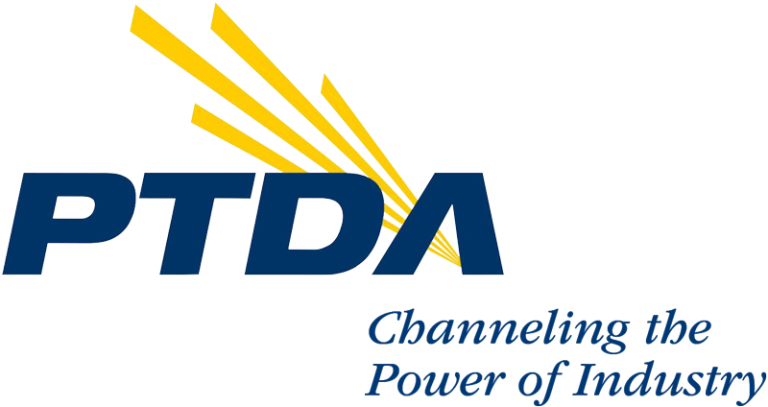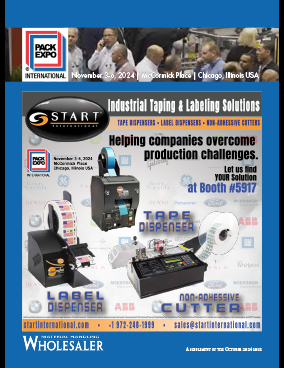H&E Equipment Services, Inc. has reported financial results for the first quarter ended March 31, 2025.
In the seasonally softer first quarter, which included one less calendar day, demand from local markets remained weak. In addition to the challenging demand trend, merger announcements in the quarter created pressure on the performance of the business. These factors contributed to a 7.2% decline in first quarter equipment rental revenues compared to the first quarter in 2024.
The Company’s branch expansion strategy continued with only those openings that were already planned and underway for the first and second quarters, including four openings in the first quarter, followed by one opening so far in the second quarter. These openings, combined with our existing operations, allow H&E to compete more effectively for new business opportunities.
We believe the merger with Herc Rentals will further elevate operating resiliency across a broader network of end markets, geographies, products and customer solutions, which is advantageous when managing the slower phases of the business cycle. The Company remains enthusiastic about the merger and looks forward to an expected mid-year 2025 close of the transaction.
FIRST QUARTER 2025 SUMMARY WITH A COMPARISON TO FIRST QUARTER 2024
- Revenues declined 14.0% to $319.5 million compared to $371.4 million.
- Net loss was $6.2 million. Excluding transaction expenses, adjusted net income was $1.2 million compared to net income of $25.9 million. The effective income tax rate was 24.1%, or 27.4% adjusted for transaction expenses, and compared to 26.5%.
- Adjusted EBITDA totaled $131.2 million, a decrease of 18.9% compared to $161.7 million. Adjusted EBITDA margins were 41.1% of revenues compared to 43.6%.
- Total equipment rental revenues were $274.0 million, a decrease of $21.3 million, or 7.2%, compared to $295.3 million. Rental revenues were $242.9 million, a decrease of $18.9 million, or 7.2%, compared to $261.7 million.
- Sales of rental equipment decreased 50.3% to $23.9 million compared to $48.1 million.
- Total gross margin declined to 38.7% compared to 44.4%.
- Total equipment rental gross margins were 38.2% compared to 43.3%. Rental gross margins were 43.6% compared to 48.5%.
- Average time utilization (based on original equipment cost) was 60.3% compared to 63.6%. The Company’s rental fleet, based on original equipment cost, closed the first quarter of 2025 at approximately $2.9 billion.
- Average rental rates, excluding acquisitions completed over the last twelve months, declined 2.0% compared to the first quarter of 2024, and 1.3% on a sequential quarterly basis.
- Dollar utilization was 33.1% compared to 37.0%.
- Average rental fleet age on March 31, 2025, was 43.2 months compared to an industry average age of 49.3 months.
- Paid regular quarterly cash dividend of $0.275 per share of common stock.
FINANCIAL DISCUSSION FOR FIRST QUARTER 2025
Revenue
Total revenues were $319.5 million in the first quarter, a decline of 14.0% compared to $371.4 million in the first quarter of 2024. Total equipment rental revenues of $274.0 million declined 7.2% compared to $295.3 million in the first quarter of 2024. Rental revenues of $242.9 million decreased 7.2% compared to $261.7 million in the first quarter of 2024. Sales of rental equipment totaled $23.9 million, a decrease of 50.3% compared to $48.1 million in the first quarter of 2024. Sales of new equipment of $7.4 million declined 28.7% compared to $10.4 million in the same quarter of 2024.
Gross Profit
Gross profit totaled $123.6 million in the first quarter of 2025, a decrease of 25.0% compared to $164.9 million in the first quarter of 2024. Total gross margin declined to 38.7% for the first quarter of 2025 compared to 44.4% for the same quarter in 2024. On a segment basis, gross margin on total equipment rentals was 38.2% in the first quarter of 2025 compared to 43.3% in the first quarter of 2024. First quarter rental margins were 43.6% compared to 48.5% over the same period in 2024. Rental rates in the first quarter of 2025, excluding acquisitions completed over the last twelve months, declined 2.0% compared to the first quarter of 2024. Time utilization (based on original equipment cost) was 60.3% in the first quarter of 2025 compared to 63.6% in the first quarter of 2024. Gross margins on sales of rental equipment declined to 59.0% in the first quarter of 2025 compared to 62.9% in first quarter of 2024. Gross margins on sales of new equipment were 18.9% in the first quarter of 2025 compared to 17.0% over the same period in 2024.
Rental Fleet
The original equipment cost of the Company’s rental fleet as of March 31, 2025 was approximately $2.9 billion, representing an increase of $108.1 million, or 3.8%, compared to the end of the first quarter of 2024.
Dollar utilization in the first quarter of 2025 was 33.1% compared to 37.0% in the first quarter of 2024.
Selling, General and Administrative Expenses
Selling, General, and Administrative (“SG&A”) expenses for the first quarter of 2025 were $111.6 million, a decrease of $2.7 million, or 2.4%, compared to $114.3 million in the first quarter of 2024. The decline was due primarily to lower employee salaries, wages, payroll taxes, and other related employee expenses, and a reduction in promotional costs. The decline was partially offset by an increase in expenses associated with facilities, insurance costs, and depreciation and amortization. SG&A expenses in the first quarter of 2025 as a percentage of total revenues were 34.9% compared to 30.8% in the first quarter of 2024. Approximately $7.7 million of the SG&A expenses in the first quarter of 2025 were attributable to branches opened or acquired during or after the first quarter of 2024.
Income (Loss) from Operations
Loss from operations for the first quarter of 2025 was $5.8 million, including transaction expenses of $9.8 million attributable to the planned merger with Herc Holdings Inc. Adjusted income from operations in the first quarter, excluding the transaction expenses, was $15.6 million, or 4.9% of revenues, and compared to income from operations of $52.0 million, or 14.0% of revenues, in the first quarter of 2024.
Interest Expense
Interest expense was $16.0 million for the first quarter of 2025, compared to $18.4 million in the first quarter of 2024.
Net Income (Loss)
Net loss in the first quarter of 2025 was $6.2 million, or $0.17 per diluted share, which included the previously noted transaction expenses of $9.8 million. Adjusted net income in the first quarter of 2025, excluding the transaction expenses, was $1.2 million, or $0.03 per diluted share, compared to net income of $25.9 million, or $0.71 per diluted share, in the first quarter of 2024. The effective income tax rate for the first quarter of 2025 was 24.1%, or 27.4% adjusted for the transaction expenses, compared to an effective income tax rate of 26.5% in the same quarter of 2024.
Adjusted EBITDA
Adjusted EBITDA in the first quarter of 2025 totaled $131.2 million, or 41.1% of revenues, compared to $161.7 million, or 43.6% of revenues, in the same quarter of 2024.
Non-GAAP Financial Measures
This press release contains certain non-GAAP (generally accepted accounting principles) measures (EBITDA, Adjusted EBITDA, Adjusted EBITDA Margin, Adjusted Income (Loss) from Operations, Adjusted Net Income (Loss), Adjusted Net Income (Loss) per share and the disaggregation of equipment rental revenues and cost of sales numbers) detailed below. EBITDA and Adjusted EBITDA are non-GAAP measures as defined under the rules of the Securities and Exchange Commission (“SEC”). We define Adjusted EBITDA for the periods presented as EBITDA adjusted for non-cash stock-based compensation expense and transaction expenses. Adjusted EBITDA Margin is calculated as Adjusted EBITDA divided by total revenues.
We use EBITDA, Adjusted EBITDA, and Adjusted EBITDA Margin in our business operations to, among other things, evaluate the performance of our business, develop budgets and measure our performance against those budgets. We also believe that analysts and investors use EBITDA, Adjusted EBITDA, and Adjusted EBITDA Margin as supplemental measures to evaluate a company’s overall operating performance. However, EBITDA, Adjusted EBITD, A and Adjusted EBITDA Margin have material limitations as analytical tools and you should not consider them in isolation, or as substitutes for analysis of our results as reported under GAAP. We consider them useful tools to assist us in evaluating performance because they eliminate items related to components of our capital structure, taxes and non-cash charges. The items that we have eliminated in determining EBITDA for the periods presented are interest expense, income taxes, depreciation of fixed assets (which includes rental equipment and property and equipment,) and amortization of intangible assets. For Adjusted EBITDA, we eliminate non-cash items such as non-cash stock-based compensation expense and any other non-recurring items described above applicable to the particular period. However, some of these eliminated items are necessary to our business. For example, (i) interest expense is a necessary element of our costs and ability to generate revenue because we incur a significant amount of interest expense related to our outstanding indebtedness; (ii) payment of income taxes is a necessary element of our costs; (iii) depreciation is a necessary element of our costs and ability to generate revenue because rental equipment is the single largest component of our total assets and we recognize a significant amount of depreciation expense over the estimated useful life of this equipment; and (iv) stock compensation expense while non-cash, is an element of our costs. Any measure that eliminates components of our capital structure and costs associated with carrying significant amounts of fixed assets on our consolidated balance sheet has material limitations as a performance measure. In light of the foregoing limitations, we do not rely solely on EBITDA, Adjusted EBITDA and Adjusted EBITDA Margin as performance measures and also consider our GAAP results. EBITDA, Adjusted EBITDA, and Adjusted EBITDA Margin are not measurements of our financial performance or liquidity under GAAP and, accordingly, should not be considered alternatives to net income (loss), operating income (loss) or any other measures derived in accordance with GAAP. Because EBITDA, Adjusted EBITDA, and Adjusted EBITDA Margin may not be calculated in the same manner by all companies, these measures may not be comparable to other similarly titled measures used by other companies.
We use Adjusted Income (Loss) from Operations, Adjusted Net Income (Loss) and Adjusted Net Income (Loss) per Share (“Adjusted Income (Loss) Measures”) in our business operations to, among other things, analyze our financial performance on a comparative period basis without the effects of significant one-time, non-recurring items. We define the Adjusted Income (Loss) Measures for the periods presented as Income (Loss) from Operations, Net Income (Loss), and Net Income (Loss) per Share, respectively, adjusted for transaction expenses. Additionally, we believe Adjusted Income (Loss) Measures, in combination with financial results calculated by GAAP, provide investors with useful information and additional perspective concerning future profitability. However, Adjusted Income (Loss) Measures are not measurements of our financial performance under GAAP and, accordingly, should not be considered in isolation or as alternatives to GAAP Income (Loss) from Operations, Net Income (Loss,) and Net Income (Loss) per Share. Because Adjusted Income (Loss) Measures may not be calculated in the same manner by all companies, these measures may not be comparable to other similarly titled measures used by other companies.
We have presented in a supplemental schedule the disaggregation of our equipment rental revenues to provide further detail in evaluating the period-over-period performance of our rental business relative to equipment rental gross profit and equipment rental gross margin, and believe these non-GAAP measures may be useful to investors for this reason. However, you should not consider this in isolation or as a substitute for analysis of our results as reported under GAAP.
Reconciliations of these non-GAAP financial measures to the most directly comparable GAAP financial measures can be found in the financial tables accompanying this earnings release.
Conference Call
The Company will not hold a conference call to discuss first quarter 2025 reported results.











